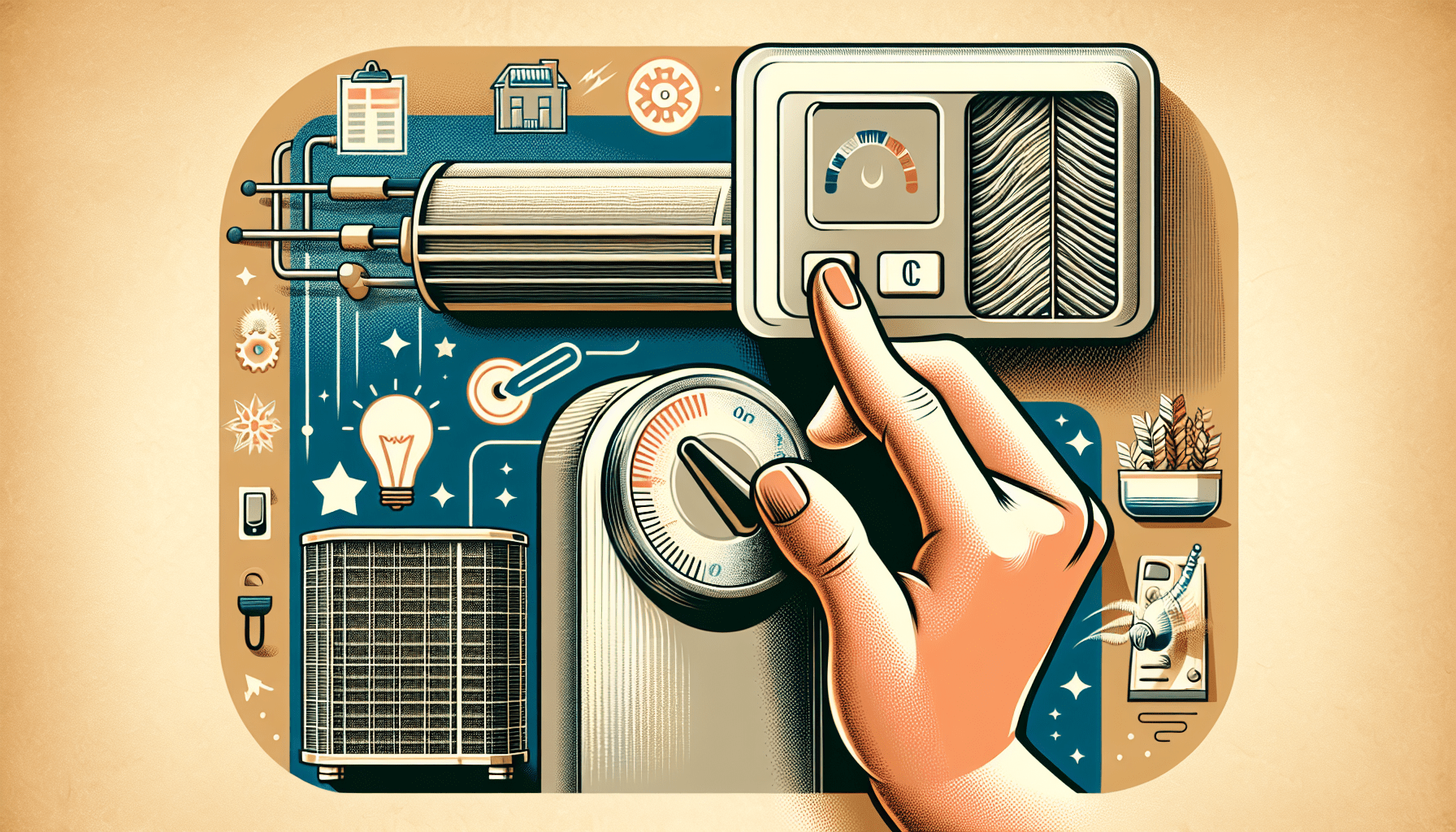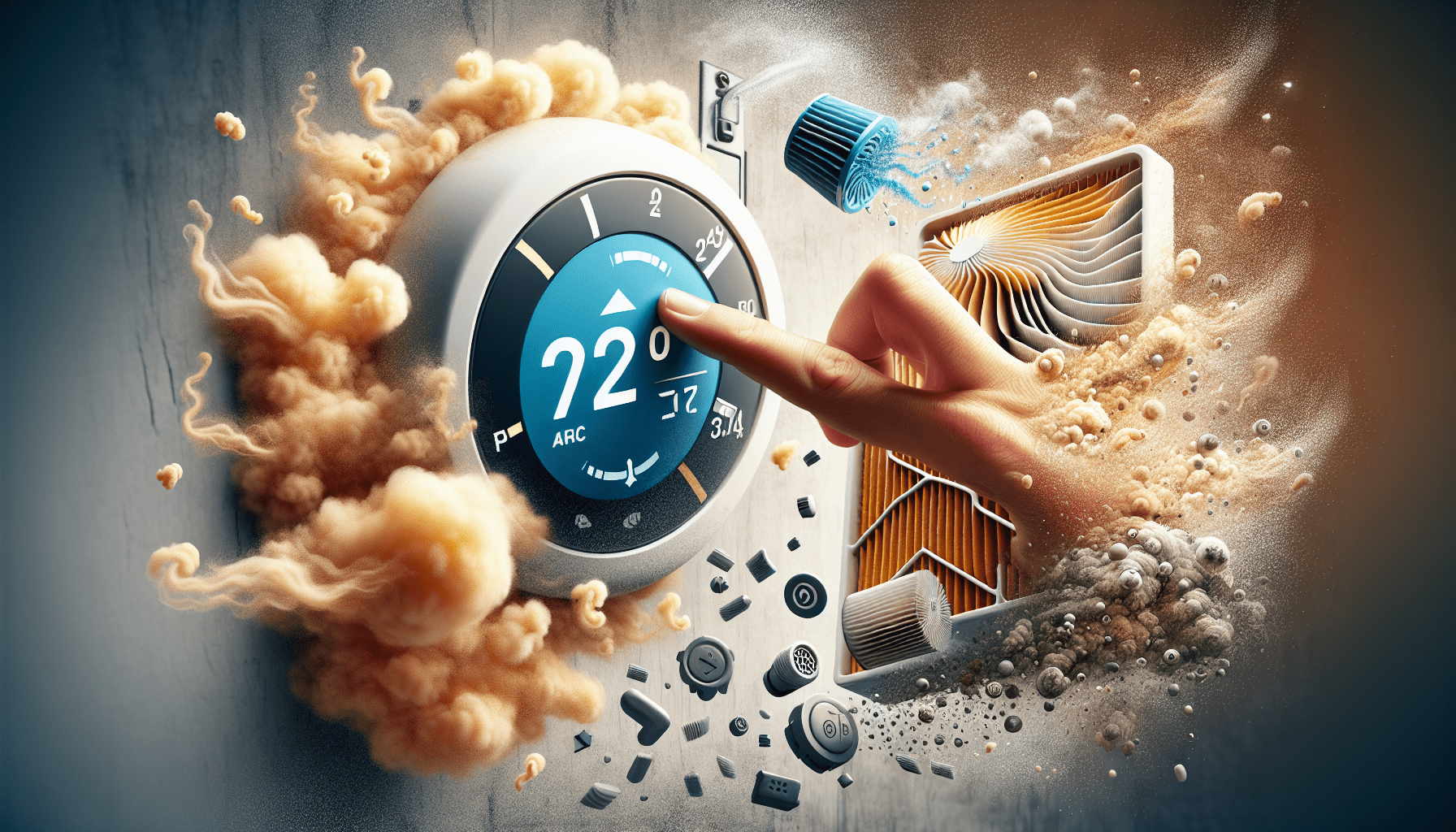Are you feeling the heat and in need of a cool solution for your home? Look no further! In this article, we will walk you through some common air conditioning troubleshooting tips specifically tailored for homeowners like yourself. Whether you’re dealing with a malfunctioning unit or simply want to ensure your AC is running smoothly, these tips will help you stay cool and comfortable all summer long. So grab a cold drink, sit back, and get ready to become the air conditioning expert in your own home!

Understanding Common Air Conditioning Units
When it comes to keeping your home cool and comfortable, understanding the different types of air conditioning units is essential. There are several options available, each with its own unique features and benefits. The most common types of air conditioning units include window units, central air conditioning systems, portable units, and ductless mini-split systems. Each of these units operates differently and is designed to accommodate different spaces and cooling needs. By familiarizing yourself with these different options, you can choose the right air conditioning unit for your home.
Basic Components of an Air Conditioning Unit
To better understand how air conditioning units work, it’s important to know their basic components. While the specifics may vary depending on the type of unit, the main components remain the same. These components include the compressor, condenser, evaporator, expansion valve, and refrigerant. The compressor pressurizes the refrigerant, while the condenser releases heat from the refrigerant. The evaporator cools the air, and the expansion valve regulates the flow of refrigerant. By understanding these components, you can troubleshoot common issues and ensure the proper functioning of your air conditioning unit.
How Air Conditioners Work
Air conditioning units work by removing heat and humidity from the air in your home, leaving you with a cool and comfortable environment. The process begins with the warm air being drawn into the unit and passed over the evaporator coil. As the air passes over the coil, the refrigerant inside absorbs the heat, cooling the air in the process. The cooled air is then circulated back into your home while the warm air is expelled outside through the condenser unit. This continuous cycle ensures that your home remains at a comfortable temperature even on the hottest days. Understanding how air conditioners work can help you troubleshoot any issues that may arise.
Safety Precautions Before Troubleshooting
Before you start troubleshooting your air conditioning unit, it’s important to prioritize safety. Taking a few precautions can help prevent accidents and further damage to the unit. First and foremost, always turn off the power to the unit before conducting any repairs or maintenance. This will protect you from electrical shocks. Secondly, take the time to read the manual that came with your unit. Familiarize yourself with the manufacturer’s guidelines and instructions. Additionally, ensure that you have the proper tools and equipment for the job. Using the wrong tools can lead to further damages or injuries. Lastly, understand the limitations of your knowledge and skills. If a repair seems beyond your abilities, it’s best to call a professional for assistance.

Inadequate Cooling Issues
If you’re experiencing inadequate cooling from your air conditioning unit, there are a few common issues to investigate. Start by checking the thermostat settings. Make sure it is set to the desired temperature and that the fan is set to “Auto” or “On” as required. Next, inspect the air filter. If it’s dirty or clogged, it can impede airflow and reduce cooling efficiency. Clean or replace the air filter if necessary. Additionally, examine the condenser unit outside. Ensure that it is not blocked by debris or vegetation. Finally, check for any obstructions in the air vents throughout your home. Blocked vents can restrict airflow and result in poor cooling performance.
Problems with Air Conditioning Unit Power
If your air conditioning unit is not receiving power, there are several potential causes to investigate. Start by inspecting the power switch located near the unit. Make sure it is turned on. Next, review the circuit breakers in your electrical panel. If a breaker has tripped, reset it and see if the unit turns on. Additionally, analyze the power cord for any damage or loose connections. If you notice any issues, it may be necessary to repair or replace the power cord. Lastly, examine the fuse box for any blown fuses. Replace any blown fuses with ones of the correct rating. These troubleshooting steps should help resolve power-related issues with your air conditioning unit.
Air Conditioning Unit Not Turning On
If your air conditioning unit is not turning on at all, there are a few potential issues to consider. Begin by troubleshooting the thermostat. Ensure that it is set to “Cool” mode and at a temperature lower than the current room temperature. If the thermostat is functioning correctly, check the internal circuit breaker located in the electrical panel. If it has tripped, reset it and see if the unit turns on. Additionally, inspect the unit for any dirt or debris that may be blocking airflow and causing the system to shut off. Lastly, assess the condition of the evaporator coil. If it is dirty or frozen, it can cause the unit to malfunction. Clean or defrost the coil as needed.
Frequent Cycling of Air Conditioning Unit
If your air conditioning unit is frequently cycling on and off, it may indicate an underlying issue. Start by verifying the location of your thermostat. If it is exposed to direct sunlight or drafts, it may sense an incorrect temperature and cause the unit to cycle unnecessarily. Relocate the thermostat if necessary. Next, check for proper insulation in your home. Insufficient insulation can result in increased heat gain or loss, causing the unit to cycle more frequently. Additionally, examine the refrigerant levels in your system. If they are low, it can lead to inefficient cooling and frequent cycling. Lastly, assess whether your unit is properly sized for the space it is cooling. An undersized or oversized unit can cause frequent cycling and inefficient operation.
Issues with the Air Conditioning Unit’s Fans
The fans in your air conditioning unit play a crucial role in circulating air and maintaining proper cooling. If you are experiencing problems with the fans, there are a few common issues to consider. Start by identifying any problems with the motor. A faulty motor can cause the fans to operate poorly or not at all. If the motor is the issue, it may need to be repaired or replaced. Additionally, assess the capacitor, which provides a boost of power to start the motor. A faulty or weak capacitor can prevent the fans from functioning correctly. Furthermore, verify that the fan belts and blades are in good condition and properly aligned. Lastly, clean any dust and debris from the fan area, as buildup can impede airflow and cause issues with the fans.
Dealing with Strange Noises or Smells
If your air conditioning unit is producing strange noises or smells, it’s important to address the issue promptly. Different types of noises can indicate specific problems. For example, a rattling noise may suggest loose components, while a grinding noise could indicate issues with the motors or fan blades. By identifying the type of noise, you can narrow down the potential causes and take appropriate actions. Similarly, different types of smells can signal specific issues. A musty odor may indicate the presence of mold or mildew, while a burning smell could suggest an electrical problem. Fixing loose components and cleaning mold or mildew should help eliminate these unpleasant odors.
Leakage and Drainage Problems
Leakage and drainage issues in your air conditioning unit can lead to various problems, including water damage, mold growth, and reduced cooling efficiency. Start by checking for water leaks around the unit. Excessive condensation or pooling water may indicate a problem with the condensate drain or drain pan. If the condensate drain is clogged or damaged, it can cause water to accumulate. Clean or repair the drain as necessary. If the drain pan is cracked or damaged, it may need to be replaced. Additionally, inspect the refrigerant lines for any signs of leaks. Low refrigerant levels can result in reduced cooling performance and may require professional assistance to resolve.
When to Call a Professional
While it’s important to troubleshoot and address common issues with your air conditioning unit, there are situations where calling a professional is necessary. If you are uncomfortable or unfamiliar with conducting repairs or maintenance on your air conditioning unit, it’s best to leave it to the experts. Additionally, if you have tried troubleshooting but the problem persists or worsens, it’s time to seek professional help. Finding a trustworthy HVAC contractor is crucial. Look for companies with positive reviews and certifications. Regular maintenance of your air conditioning unit is also essential to prevent issues and ensure optimal performance. Schedule professional maintenance at least once a year to keep your unit running smoothly.
By understanding the different types of air conditioning units, familiarizing yourself with their basic components and how they work, and following the proper troubleshooting steps, you can effectively address common issues that may arise with your unit. Remember to prioritize safety, know your limitations, and seek professional assistance when needed. With the right knowledge and care, you can keep your home cool and comfortable all summer long.




